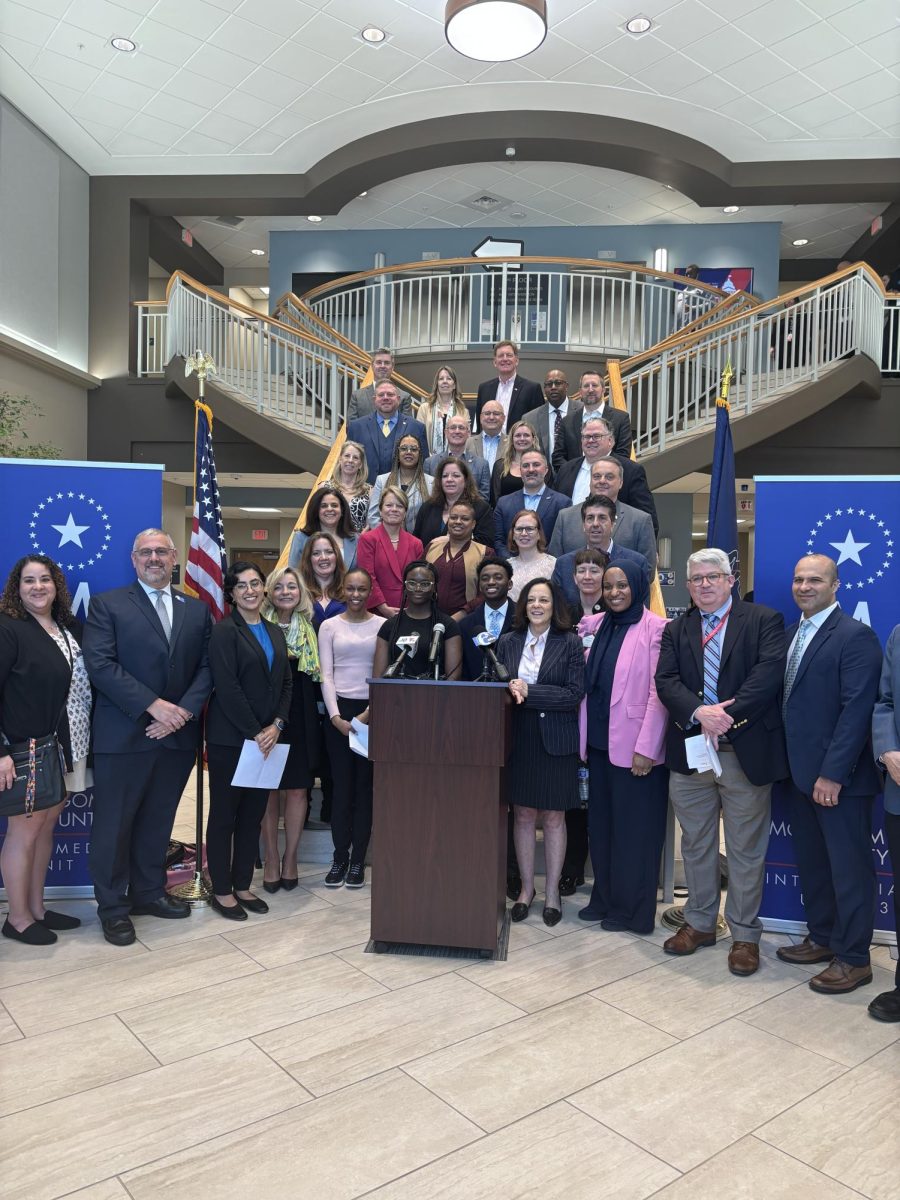As a society, it is a known fact that communication is needed to be able to function effectively. Being able to have the ability to communicate is especially significant when it comes to education. Communication is a two-way street; there needs to be an equal amount of effort between both parties. In the case of public education, these parties are the school district and the families it serves. But when there are limits to this communication, major problems can arise.
Norristown in particular has a population of 35,813 people, with 27.5% of which is Hispanic. In the Norristown Area School District (NASD), the student enrollment count is 7,800. And that, Hispanic children make up 48.9% of the student body. Despite nearly half of the students being Hispanic, the faculty is only 2.8% Hispanic. Because of the cultural and language barriers, the amount of Hispanic faculty often isn’t sufficient for effective communication.
When reaching out to families, NASD does an effective job, offering a variety of options for families to choose from, which include robotic automated calls, automated texts, and automated emails; the district also posts information in both English and Spanish to different social media platforms.
NASD often translates every message, call, email, or post when sending information over to the Hispanic community, and it is clear the administration and Superintendent Christopher Dormer are always trying to find better systems that can allow the district to communicate information in English and Spanish simultaneously while also getting back data regarding how many people actually receive that information.
In previous years, the district utilized an application called Talking Points, which gave teachers direct communication with families via text message. While there are many apps that do this, Talking Points could convert messages to a family’s preferred language. Unfortunately Talking points, according to Dormer, “kind of broke,” so the district had to switch to a new program called “Rooms.” Although the new app has the same capabilities as the previous software, it has a setback. In order for teachers to have direct contact with families, the families have to be signed up to get these messages and it does not translate the message directly. Dormer acknowledged earlier this year that not everyone knew about this recent change of application.
“We’re trying to really push as many parents to get signed up with Rooms as possible. So we’ve done emails home, text messages home, we’ve done fliers that have gone home and backpacks giving directions for parents to sign up and letting them know, like, this is the way you’re going to now talk to your teacher,” Dormer said when the program was launched.
While promoting community engagement, NASD also tried to get multiple communications. On the newest version of the website in the mobile app called “Norristown ASD,” parents and community members have the opportunity to register how they individually want to receive information from the district.
Although NASD presents a lot of options, the engagement between Hispanic families and the district still isn’t as consistent as either party wants. This outcome could be a result of distinct reasons, but there are possibly two main points that lead to this issue. These factors are trust and the language barrier between staff and Hispanic families.
Former school board member Monica D’Antonio recognizes these points. D’Antonio spoke about an example in which there was a family event at Hancock Elementary School and they had no translators when the majority of parents who attended were Spanish-speaking.
“You can’t have these events and not make them accessible. It’s about breaking down barriers for people,” said D’Antonio.
Speaking the same language and socialization are important aspects while trying to build trust-founded relationships. So if there’s a lack of mutual understanding and fraternization, then there’s not enough trust.
A mother from the Hispanic community said, “Si desde un principio no me están hablando en mi idioma, no me hablan con confianza, yo no me siento parte de su comunidad, aunque lleve yo tantos años aquí.[If from the beginning they’re not speaking to me in my language, they don’t speak to me with confidence/trust, I don’t feel a part of their community, even though I have been here for so many years.]”
D’Antonio mentioned that some communities, including the Hispanic community, have a sense of mistrust with the school district. She explains that this mistrust can stem from more than one cause, but the lack of follow-up and follow-through with families could be why.
“I think sometimes parents feel frustrated because they will express themselves to either the school board or to the administration, and nobody follows up with them. Right. That’s frustrating,” said D’Antonio.
Another mother from the Hispanic community said, “Yo llamo y la verdad no me contestan o a veces este yo llamo y me dicen ‘Es que lo que pasa que no hay quien traduzca, le podemos regresar después la llamada’ o estoy intentando marcar, y a veces me contestan alguien, y me da un número, y yo marco a ese numero y nadie contesta, solo ‘deja tu mensaje y después te llamamos’.[I call and the truth is they don’t answer me, or sometimes I call and they tell me ‘What’s happening is that there isn’t anyone who can translate, we can call you back later’ or I’m trying to dial and sometimes someone answers, and gives me a number, and I dial that number, and no one answers, just ‘leave your message and we will call you later’.]”
D’Antiono understands these concerns “If you’re only going to do the listening and not the acting, they are not going to trust you because why should they?” she said. “You haven’t done anything to show yourself to be a committed superintendent, teacher, or school board member.”
When D’Antonio ran for the school board several years ago, she met up with various Hispanic parents. Some of these interactions were, as she said, “great,” but other interactions gave her a side of “Who are you, white lady? What are you doing here? What are you trying to find out about us?” She’d reply with “I’m running for school board,” and “I want to hear your voice.” Once she established trust within the Hispanic community, she said she’d try to advocate for them to the school district. She feels that the administration should do the same.
“They need to get out in the community and start visiting places and meeting with people. But if they can’t do that, they need to find someone who is the trusted person. If they can’t build trust themselves because they just don’t have enough time, they need to find that person,” D’Antonio said.
The first mother mentioned agrees with D’Antonio. She says, “Creo que dejando entrar a más comunidad en sus filas en sus reuniones en que no solo escuchen que convivan porque no es lo darte una media hora o una hora de su tiempo para que escuches y escuches pero no entiendas cuáles son las necesidades de la comunidad no es lo mismo escuchar que entender.[I think that by letting more of the community into their ranks in their meetings in which they not only listen but coexist because it’s not just giving them a half hour or an hour of their time, so they can listen and listen, but not understand what the needs of the community are, listening is not the same as understanding.]”
In the end, NASD and the Hispanic community aim to comprehend how to transform their one- way communication into a two-way dialogue that benefits both parties in order to work together to accommodate their wants and needs, but also to become aware of the outcome that one-way communication can generate.












